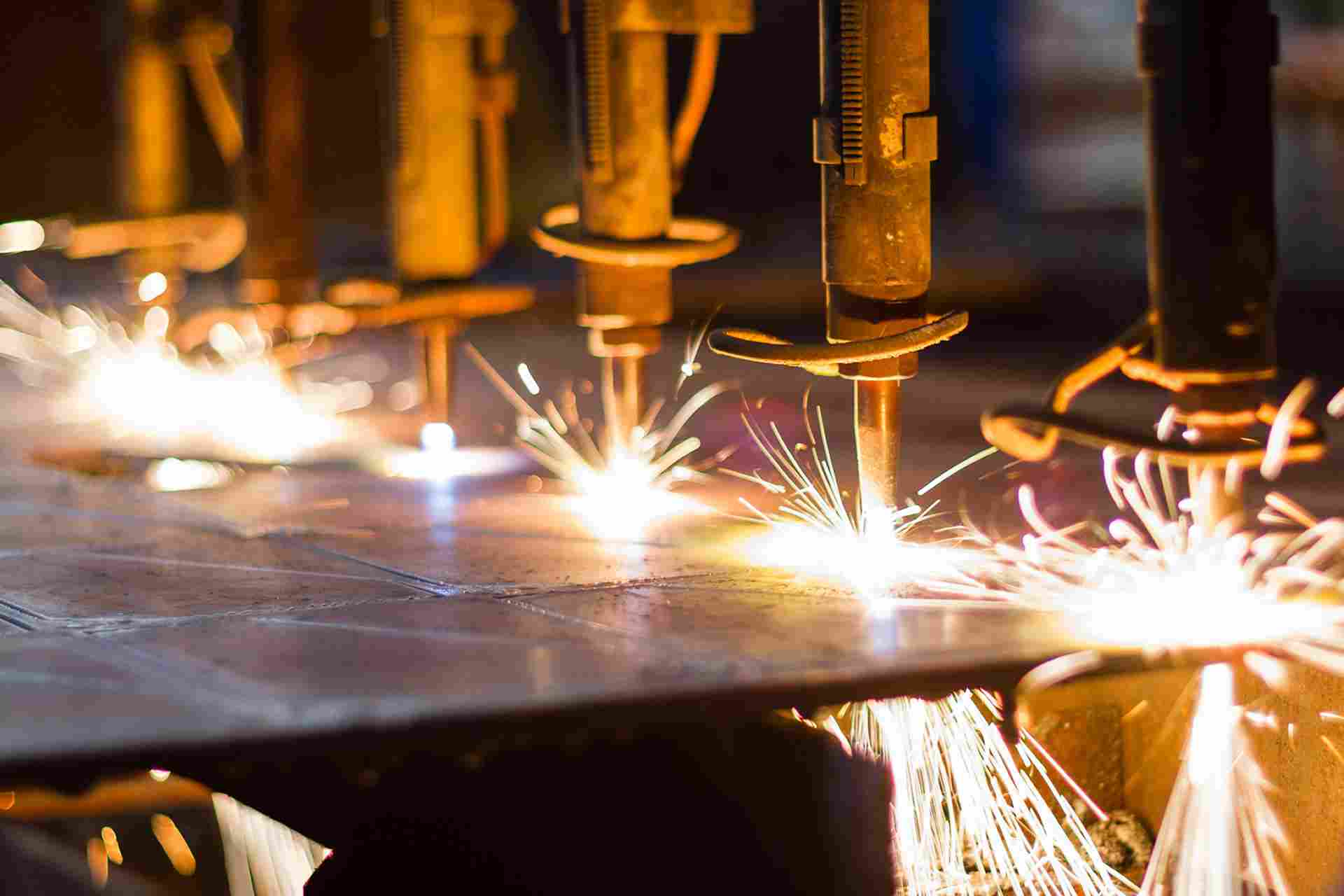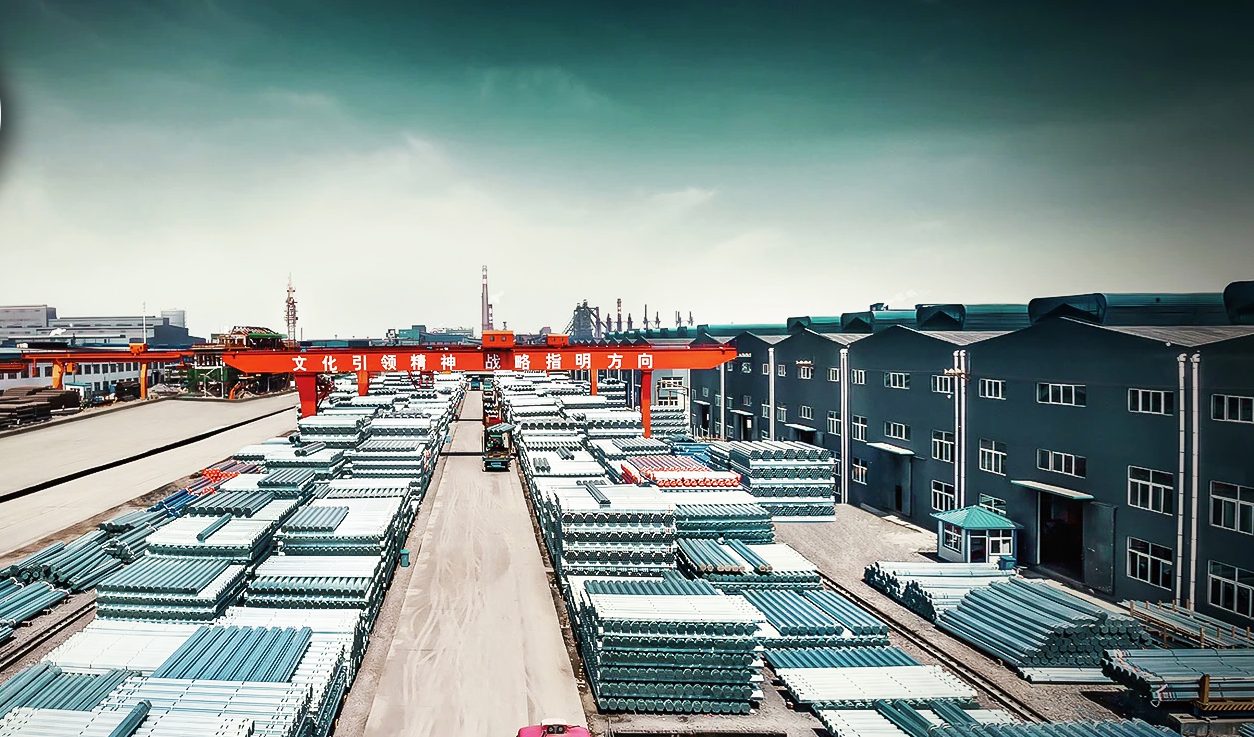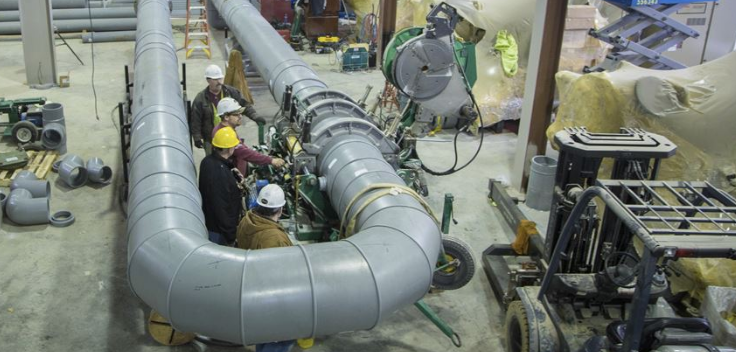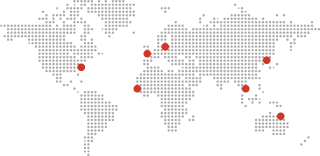Tubos de aço e processos de fabricação
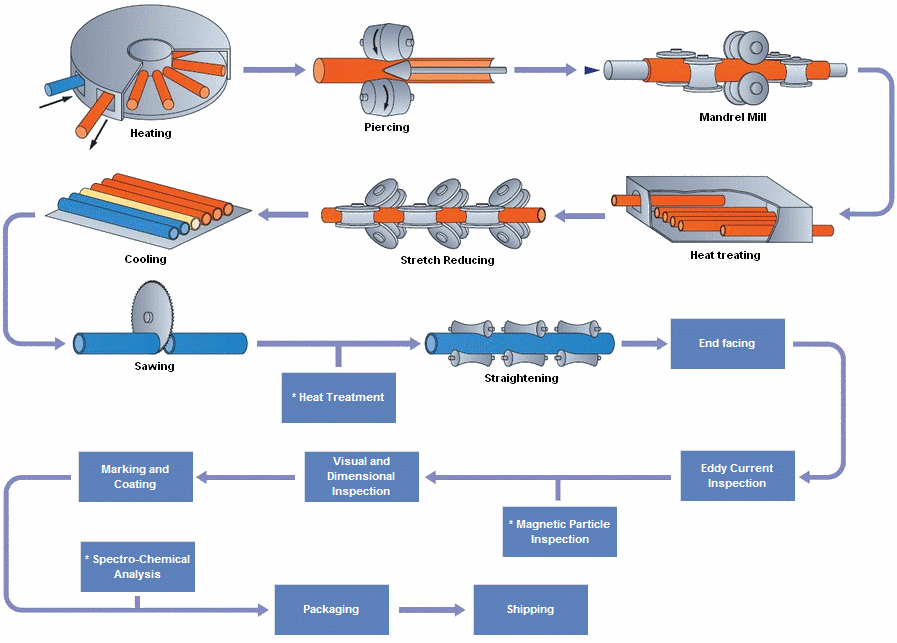
Tubos de aço e processos de fabricação
Introdução
O advento da tecnologia Rolling Mill e seu desenvolvimento durante a primeira metade do século XIX também anunciou a fabricação industrial de tubo e tubo. Inicialmente, Tiras enroladas de folha foram formadas em uma seção transversal circular por arranjos de funil ou rolos, E então bumbum ou colo soldado no mesmo calor (Forge Forge Solding Process).
No final do século, Vários processos tornaram -se disponíveis para a fabricação de tubo e tubo sem costura, com os volumes de produção aumentando rapidamente em um período relativamente curto. Apesar da aplicação de outros processos de soldagem, O desenvolvimento contínuo e a melhoria adicional das técnicas perfeitas levaram ao tubo soldado sendo quase completamente empurrado para fora do mercado, com o resultado de que o tubo e o tubo sem costura dominavam até a Segunda Guerra Mundial.
Durante o período subsequente, Os resultados da pesquisa em tecnologia de soldagem levaram a uma recuperação nas fortunas do tubo soldado, Com o trabalho em desenvolvimento de desenvolvimento que se segue e a ampla propagação de numerosos processos de soldagem de tubos. Atualmente, Cerca de dois terços da produção de tubos de aço no mundo são contabilizados por processos de soldagem. Desta figura, no entanto, Cerca de um quarto assume a forma do chamado tubo de linha de grande diâmetro em faixas de tamanho fora daquelas que são economicamente viáveis na fabricação de tubos e tubos sem costura.
Como os tubos de aço são feitos? (Comentário alemão)

O comentário alemão é brilhante…Espero que você entenda o que o falante diz e mostra (-:
Tubo e tubo sem costura
Os principais processos de fabricação de tubos sem costura surgiram no final do século XIX do século XIX. Como os direitos de patente e proprietários expiravam, Os vários desenvolvimentos paralelos inicialmente perseguidos tornaram -se menos distintos e seus estágios de formação individuais foram mesclados em novos processos. Hoje, O estado da arte se desenvolveu a ponto de a preferência ser dada aos seguintes processos modernos de alto desempenho:
O processo contínuo de rolamento do mandril e o processo de bancada de push na faixa de tamanho de aprox. 21 para 178 mm diâmetro externo.
O moinho de plug-scon (MPM) com controlado (restrito) Barra de mandril flutuante e o processo de fábrica de plug na faixa de tamanho a partir de aprox. 140 para 406 mm diâmetro externo.
O piercing de rolagem cruzado e o processo de pillger na faixa de tamanho de aprox. 250 para 660 mm diâmetro externo.
Mandrel Mill Process

No processo do moinho de mandril, uma rodada sólida (ALTO) é usado. É aquecido em um forno de aquecimento rotativo e depois perfurado por um piercer. O tarugo perfurado ou a concha oca é enrolada por um moinho de mandril para reduzir o diâmetro externo e a espessura da parede que forma um tubo de mãe múltipla de comprimento. O tubo da mãe é reaquecido e reduzido a dimensões especificadas pelo redutor de alongamento. O tubo é então resfriado, corte, endireitado e sujeito a processos de acabamento e inspeção para remessa.

* Observação: Processos marcados por um asterisco são conduzidos especificações e/ou requisitos do cliente
Processo de plug plug de mannesmann

Processo de plugue da fábrica, uma rodada sólida (ALTO) é usado. É aquecido uniformemente no forno de aquecimento do fogão rotativo e depois perfurado por um piercer de Mannesmann. O tarugo perfurado ou a concha oca é enrolada no diâmetro externo e na espessura da parede. O tubo lamado tou simultaneamente polido por dentro e por fora por uma máquina de cambalear. O tubo bobinado é então dimensionado por um moinho de dimensionamento para as dimensões especificadas. A partir desta etapa, o tubo passa pelo alisador. Este processo completa o trabalho quente do tubo. O tubo (referido como um tubo de mãe) Depois de terminar e inspeção, se torna um produto acabado.

Tubo soldado e tubo
Desde que se tornou possível fabricar tira e placa, As pessoas tentaram constantemente dobrar o material e conectar suas bordas para fabricar tubos e tubos. Isso levou ao desenvolvimento do processo de soldagem mais antigo, o de forja-soldagem, que volta 150 anos.
Em 1825, O comerciante de ferro britânico James Whitehouse recebeu uma patente para a fabricação de tubos soldados. O processo consistia em forjar placas de metal individuais sobre um mandril para produzir um tubo de costura aberta, e depois aquecendo as bordas de acasalamento da costura aberta e soldando -as, pressionando -as juntas mecanicamente em um banco de empate.
A tecnologia evoluiu até o ponto em que a faixa poderia ser formada e soldada em uma passagem em um forno de solda. O desenvolvimento desse conceito de loda de bunda culminou em 1931 No processo Fretz-moon criado por J. Lua, um americano, e seu colega alemão Fretz.
As linhas de soldagem que empregam esse processo ainda estão operando com sucesso hoje na fabricação de tubo até diâmetros externos de aprox. 114 milímetros. Além desta técnica de soldagem de pressão quente, em que a faixa é aquecida em um forno para a temperatura de soldagem, Vários outros processos foram criados pelo American E. Thomson entre os anos 1886 e 1890 permitindo que os metais sejam soldados eletricamente. A base para isso foi a propriedade descoberta por James P. Joule por que passar uma corrente elétrica através de um condutor faz com que ele aqueça devido à sua resistência elétrica.
Em 1898, a empresa de ferramentas padrão, EUA, recebeu uma patente que cobre a aplicação de soldagem de resistência elétrica para fabricação de tubos e tubos. A produção de tubo soldado de resistência elétrica e tubo recebeu um impulso considerável nos Estados Unidos, e muito mais tarde na Alemanha, Após o estabelecimento de fábricas contínuas de tira quente para a produção do material de partida em massa necessário para a fabricação em larga escala. Durante a Segunda Guerra Mundial, Um processo de soldagem de arco de argônio foi inventado – novamente nos Estados Unidos – que permitiu a soldagem eficiente de magnésio na construção de aeronaves.
Como conseqüência deste desenvolvimento, Vários processos de soldagem protegidos por gás foram desenvolvidos, predominantemente para a produção de tubo de aço inoxidável. 30 anos, e a construção resultante de pipelines de longa distância de grande capacidade, O processo de soldagem do arco submerso ganhou uma posição de preeminência para a soldagem do tubo de linha de diâmetros para cima de aprox. 500 milímetros.
Moinho de tubo de solda elétrica
Tira de aço na bobina, que foi cortada na largura necessária da faixa larga, é moldado por uma série de rolos de formação em um shell de múltiplos comprimentos. As bordas longitudinais são unidas continuamente por soldagem de resistência/indução de alta frequência.
A solda de múltiplas comprimentos é então tratada com a cabeça eletricamente, dimensionado e corte para comprimentos especificados por uma máquina de corte voador. O tubo de corte é endireitado e quadrado nas duas extremidades.
Essas operações são seguidas de inspeção ultrassônica ou teste hidrostático.



